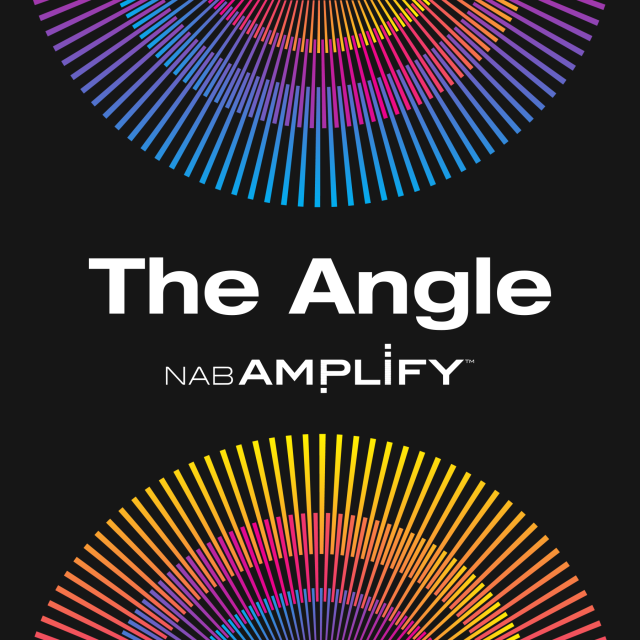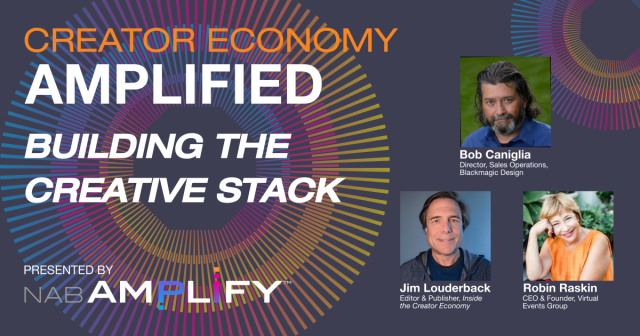Watch “Creator Economy Amplified: AI Tools for Creators.”
TL;DR
- From automating mundane tasks to amplifying creative innovation, artificial intelligence is transforming the creator economy. Jim Louderback, editor & publisher of “Inside the Creator Economy,” joins veteran journalist Robin Raskin, The Prismatic Company’s Abe Feinberg, and Rebecca Xu from Opus Clip to unpack the profound influence of AI on content creation.
- AI, says Raskin, will be seamlessly incorporated into “pretty much every part” of the lives of AI natives. AI tools are not replacing creators, Louderback says, but serving as co-pilots, enhancing their ability to produce content more efficiently and creatively.
- Xu describes how tools like Opus Clip that simplify the video editing process, transforming long-form content into engaging, short videos with a single click, cater especially to the preferences of Gen Z audiences.
- Feinberg explains how creator-designed platforms such as Prismatic will enable creators to design and produce content that’s modular, composable, and remixable, significantly reducing the time and effort required to update and adapt content across various formats and platforms.
AI’s integration into content creation tools is not just a glimpse into the future; it’s a present reality that’s enhancing the way creators produce, manage, and distribute content. From automating mundane tasks to amplifying creative innovation, artificial intelligence is transforming the creator economy, and as AI continues to evolve, its integration into the creative process heralds a new era of efficiency, personalization and engagement.
As part of NAB Amplify’s “Creator Economy Amplified” series, we sat down with industry veterans Jim Louderback, editor and publisher of Inside the Creator Economy, veteran journalist Robin Raskin, The Prismatic Company’s Abe Feinberg, and Rebecca Xu from Opus Clip to unpack the profound influence of AI on content creation.
These industry pros shared their insights into leveraging AI tools to revolutionize content creation, enhance efficiency, and foster connections with audiences. Whether you’re intrigued by the prospects of AI-driven content generation or seeking strategies to refine your creative workflow, this discussion promises a forward-looking perspective on integrating AI into your creative toolkit. Watch the full conversation in the video at the top of the page.

This chat offers a preview of the all-new Creator Lab at NAB Show, a dynamic space dedicated to exploring the newest trends and technologies driving the creator economy. Led by Louderback and Raskin, the Creator Lab will host an extensive lineup of discussions and interactive workshops, with industry experts including Feinberg and Xu offering valuable insights and practical skills to attendees.
The AI Revolution in Content Creation
Louderback uses a simple yet profound analogy to describe the impact of AI on creators: the Slinky helical spring toy. Pre-AI, he says, creators were like a closed Slinky, limited by what they could do by themselves. With AI, possibilities expand and suddenly there’s a lot more ground they can cover.
“The nice thing that happens is now with AI tools, you’re not replacing the creator, but there’s so much more that they can do, cover a lot more ground in that same amount of time, because AI really helps them be a better creator,” he says.
This visualization captures the essence of AI in content creation — expanding the potential of creators without supplanting the human touch that lies at the heart of creativity.
Using AI to generate creative content, such as scripts and even videos, results in stale, generic content that disappears in the blink of an eye, Feinberg agrees.
“The more interesting part,” he asks, “is really how do you build a system where that the AI is functioning as the supportive assistant to the creator, and the creator is still the person who’s leading that creative decision process, they are still the creative decision maker?”
As an example, Feinberg points to mobile editing apps. “Some of the motions are very tedious,” he explains. “You have to zoom in and, you know, make these little micro-edits. If an AI can be there as your assistant and be sort of learning the pattern and saying, ‘Hey, I think this might be the kind of edit you want to make, would you like to make it with a single tap,’ in the end, you’re doing exactly the same thing you would have done as the creator. But you’re turning out a lot more of the those videos edited videos in the same amount of time.”
Productivity, Xu argues, is where AI offers the most value to creators. “Ultimately, the best AI tools help creators enhance creativity and efficiency through helping them better manage their time,” she says.
“For instance, coming from the AI video editing world, there’s a lot of AI video editing tools to really help creators streamline the editing process by, say, automatically identifying and correcting errors, enhancing visuals or audio quality.”
Raskin, who comes from a background in magazine publishing during the print era, provides a broader perspective, suggesting that AI’s integration into content creation is part of a generational shift.
“Digital natives grew up in a video-first environment where video became like the lingua franca that everybody speaks and communicates with,” she notes, “and the new generation will be an AI generation.”
AI, says Raskin, will be seamlessly incorporated into “pretty much every part” of the lives of AI natives. “Whether it’s the car that you drive, or whether it’s the events that you produce or whatever that is, AI will be infused and the hardest challenge will be to use it wisely and creatively.”
Personalization and Audience Engagement
Another critical aspect of AI in content creation is understanding and engaging with audiences. By analyzing feedback and preferences, Louderback says, AI tools can help creators identify their most engaged fans and tailor content to meet their interests. “It helps you understand your audience better,” he explains.
“If you’re a creator, and you’ve got lots of people commenting and saying things, whether it’s on your videos, or other places, it can go in and summarize all of those comments and help you find those people that are your biggest fans and figure out what they want, and help you figure out how to give your audience and your community even more of what binds them to you.”
Historically, Feinberg notes, information has been presented in what he calls a one-size-fits-all approach. But AI is driving a shift to a more tailored content delivery.
“You know, you get a lecture for everyone, or everybody watches the same video in the same format, or everyone reads the same blog post,” he details. “But now, there’s a huge amount of potential for AI to help you take really the same core value that you’ve created, but present it in different ways — even on the fly — to an individual person to give them what they most want.”
Practical Applications and Future Prospects
Tools like Opus Clip, which uses to AI to automatically edit long-form videos into short, high-quality sharable bites, and content creation platforms like Prismatic aimed at helping creators design and build for scale, are the wave of the future.
“At its core, I believe AI is a tool that helps creators tell a better story.,” says Xu. “A lot of people, especially Gen Zs, have changed their habit of consuming content from TVs, or long videos or articles into short videos. So short videos are increasingly becoming a main medium for creators to tell their stories as well as for a user or audiences to consume content.”
Opus Clip, she says, was designed to help creators. “And we’re not only helping individual creators, but also a lot of businesses who want to break into a bigger market through short videos.”

Why subscribe to The Angle?
Exclusive Insights: Get editorial roundups of the cutting-edge content that matters most.
Behind-the-Scenes Access: Peek behind the curtain with in-depth Q&As featuring industry experts and thought leaders.
Unparalleled Access: NAB Amplify is your digital hub for technology, trends, and insights unavailable anywhere else.
Join a community of professionals who are as passionate about the future of film, television, and digital storytelling as you are. Subscribe to The Angle today!
Creators, Feinberg recognizes, have a lot of value to share. “But it can be kind of locked up, because of the amount of time that it takes to transform your content.”
That’s why, he says, his team is building Prismatic, which uses AI to generate graphics, diagrams, videos, podcasts, blog posts and other content with customizable, reusable components.
“We’re working on a platform to help build a content in a way that’s modular, composable, remixable,” he explains. So you can more easily deploy things in different formats and different modalities. And then what we’re where we’re going with that is the idea that we know that creating high quality overtake or high quality content takes a lot of effort. And we want to help creators, not circumvent that effort, but get more out of the effort that they’re putting in.”
For creators just beginning to dip a toe into AI, Raskin recommends AI aggregator There’s an AI for That, a community of AI founders and users boasting what the developers call the largest database of AI tools and tasks.
“I would not go in there thinking you’ve got the answer to the world,” she cautions. “But it’s so interesting, because it lays [everything] out in categories, law, contracts, events, scheduling, and you can look up an AI-specific thing. And the deeper secret is, most of them are free for a trial. So you can experiment, decide whether it’s for you or not.”


